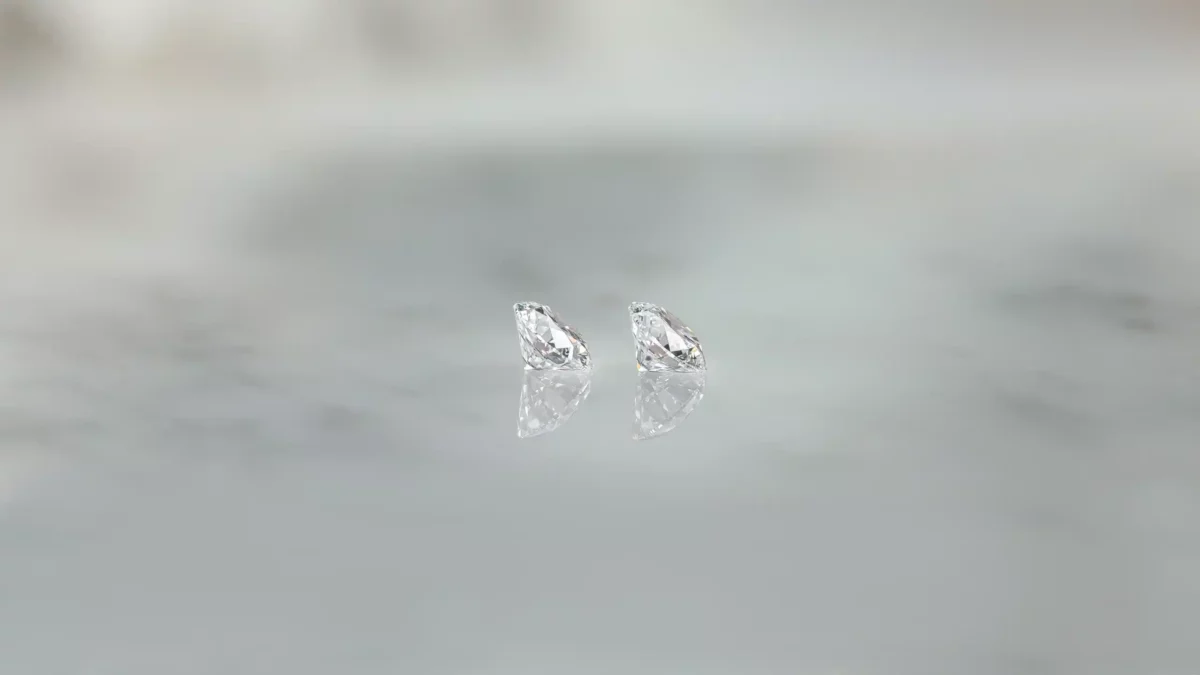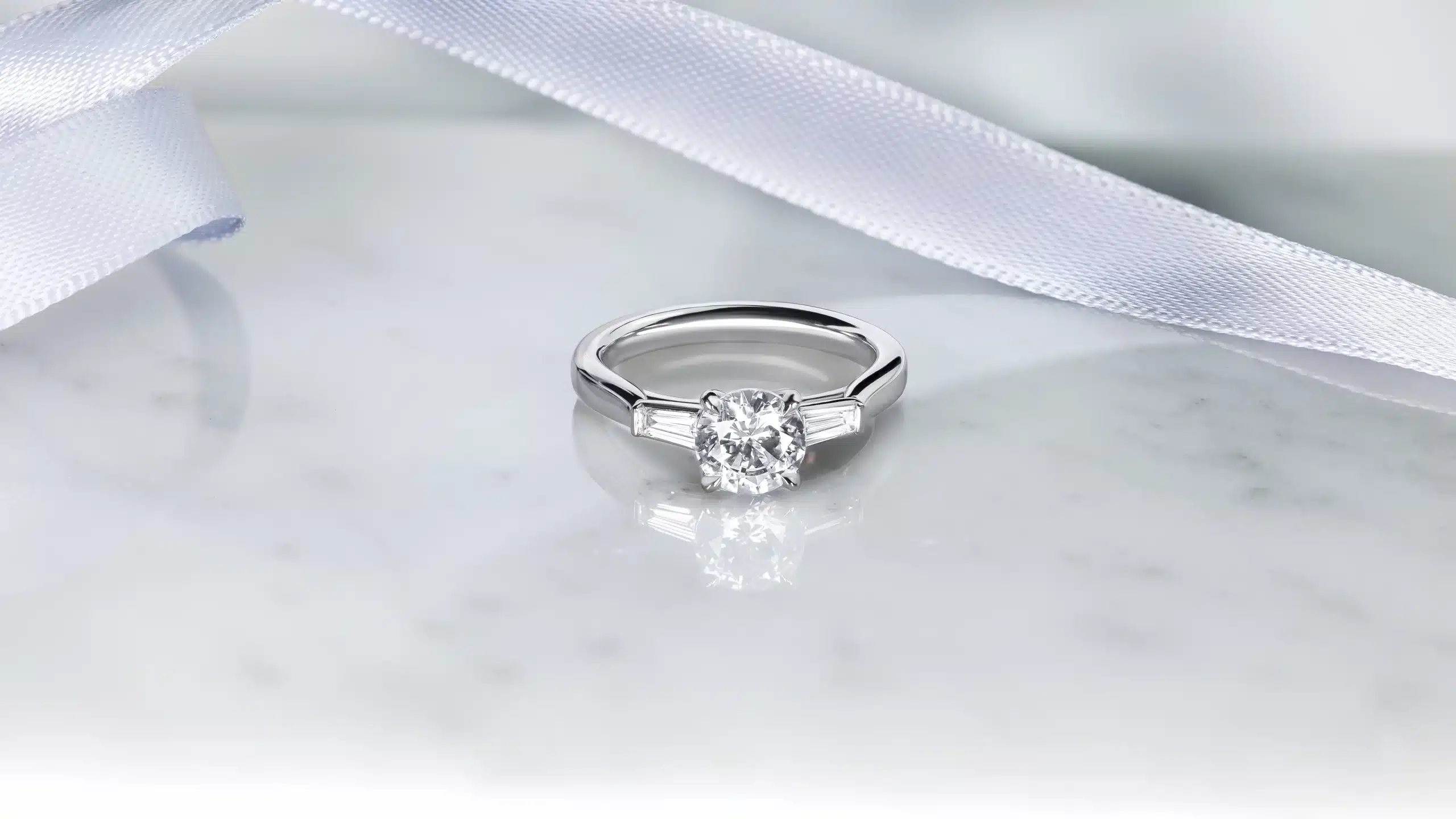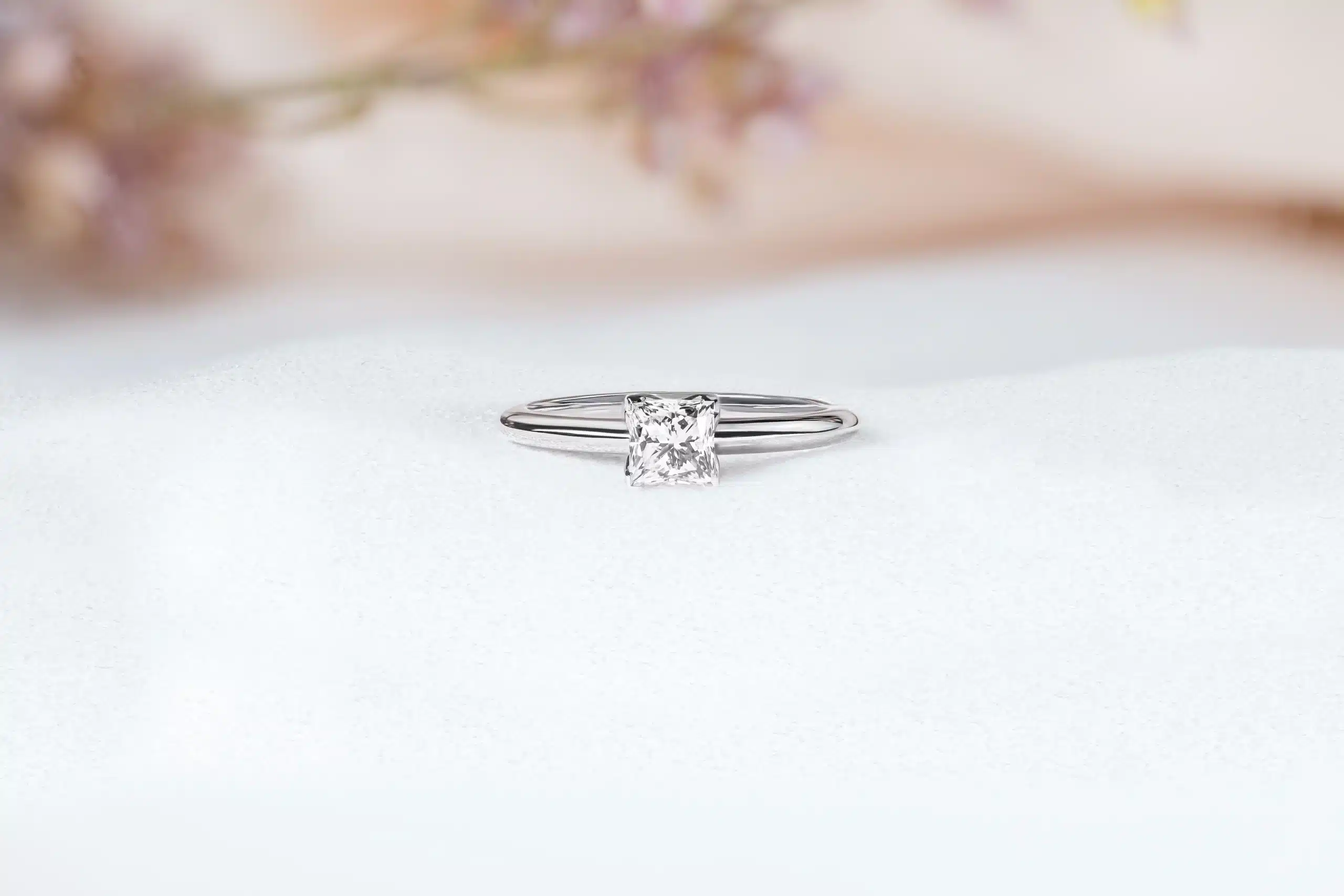

A new classic style is emerging to challenge the long-held spot of the world’s most popular cut.
Known for their elegant sparkle and brilliance, the Princess Cut is quickly growing in popularity, making them the second-most requested style for diamond engagement rings. While Round Cut diamonds still hold the top spot, Princess Cut diamond engagement rings are a brilliant, distinctive style that put a modern twist on a classic style.
The Princess Cut has evolved since the 14th Century when its predecessor was known as The French Cut. The French Cut provided a more elaborate faceting than previous styles, and was extremely popular right up to the 20th Century during the Art Deco era. As cutting processes became more complex, and artists better understood how to manipulate diamond facets to enhance brilliance and sparkle, the Princess Cut was born.
Today, Princess Cut diamond engagement rings are fast becoming a popular choice, having adorned the fingers of Emily Ratajkowski, Cameron Diaz, Hilary Duff, and Kate Bosworth.
The Princess Cut refers to a square cut diamond. It has a square or rectangular face-up shape, and a profile similar to an inverted pyramid.
When viewed from above, the facets of a high quality Princess Cut diamond form a beautifully distinctive symmetrical pattern, creating a breathtaking, complex prism of glitter and sparkle.
Cut does not mean a diamond’s shape, as is commonly assumed, but actually refers to the proportions, symmetry, and polish of a diamond or gemstone. Diamonds naturally reflect light, and each individual stone is graded on how well it does this. A craftsman uses precision artistry to cut a stone, and it is then graded on how well the cut compliments the diamond’s natural qualities. Traditionally, a well-cut diamond is one that directs more light through the crown.
Considered by many to be the most important of the four factors within the Diamond 4Cs, cut determines how well a diamond’s facets interact with light. In other words, how well the style of cut takes advantage of a diamond’s ability to reflect light and give off a bright, glittering sparkle.
Cut is the most complex and technically difficult to analyse when it comes to grading. To determine cut grade, the Gemological Institute of America (GIA) assesses how well a diamond interacts with light to create three dazzling effects: Brightness, Fire, and Scintillation.
Many things can make one diamond sparkle more than another, but essentially, the better the cut, the better the sparkle. The more facets a diamond has, the more surfaces it has to reflect, refract, and scatter light. Styles like the Princess Cut take full advantage of innovative cutting, creating a diamond that truly glitters. Other factors that enhance a diamond natural sparkle and brilliance include:
Colour and Clarity – Selecting stones that sit higher on the D-to-Z colour scale will have a healthy level of brightness, while clarity in diamonds graded SI2 or I can diminish the appearance of fire.
Size – Do not assume that the bigger the diamond, the brighter the sparkle! Symmetry, colour, and clarity determine brilliance and brightness, not size.
Design – Smart and beautiful design, such as the four-prong setting, allow more light to enter the diamond and will enhance your stone’s brightness. Adding complementary stones – large or small, like those found in the popular and elegant halo, pavé, and side stone settings, will complement and add sparkle. Diamondport’s bespoke custom engagement ring service allows you to design a setting that enhances the unique, natural beauty of your diamond.
Cleaning – Never underestimate the power of regular servicing. Diamonds and their settings accumulate grit, and regular cleaning will ensure your stones retain their brilliance, shine and sparkle. It also helps us detect any potential damage early. This is why Diamondport offer a variety of complimentary cleaning and bespoke servicing, all aimed at keeping your fine jewellery sparkling.
The Round Cut diamond was created in 1919 by Marcel Tolkowsky, who was seeking a cut style that maximised the natural brilliance and sparkle of the diamond. The style enhances light reflections, and for the last 100 years, diamond cutters have been perfecting the process for cutting round diamonds, which means the traditional style benefits from a century of innovation. The round design is simple and classical, and lends itself to many different styles. As of 2022, the traditional Round Cut diamond engagement ring remains the most popular choice by brides across the western world.
The Round Cut has 58 facets arranged symmetrically, and is a particularly difficult style for artisans to cut. In fact, over half of a rough diamond goes to waste during the process of cutting a Round Cut Diamond.

The Princess Cut, just like the Round Cut, has 58 facets arranged symmetrically. Where Round Cut diamonds have a more hidden symmetrical pattern, Princess Cut stones have a much greater, visible symmetry highly pleasing to the eye. You can see this symmetry by drawing imaginary lines vertically and horizontally down the face of the diamond, finding each side a mirror image of the other.
The top surface, or ‘table’ of the Princess Cut diamond, also has a larger surface area than the Round Cut, which can make Princess Cut diamonds appear larger than Round Cut diamonds of the same carat size.

Artisans use 80% of a raw diamond to create a Princess Cut, where Round Cut diamonds use only 40%. This means a significant 60% of the rough diamond goes to waste in order to create a Round Cut diamond. So, when comparing a Princess Cut diamond to a Round Cut diamond of equal carat, far more raw material was needed to create the Round Cut.
Due in part to their more efficient cut, Princess Cut diamonds tend to be between 10-20% less expensive than Round Cut stones.
The Princess Cut is fast-becoming renowned for its elegant, feminine design. Innovations in cutting processes have created a cut that enhances brilliance, brightness, and fire, without the lofty price tag of the more traditional Round Cut.
Choosing the right cut for your engagement ring is all about preference. For those seeking sparking brilliance that makes the most of your budget, the Princess Cut is a deeply romantic classic with a rich history, and a modern edge.
Diamondport’s engagement ring collection includes an array of classic and contemporary cuts and styles, and we are particularly proud of our Princess Cut diamond engagement rings. To take full advantage of our diamond selection, contact us before booking your consultation to ensure we can show you all we can offer. Book your private consultation today.
Explore Rings by Cut
Explore Rings by Style
Explore Rings by Type
Services & Community
About
Contact Us
Diamondport Jewellers supports diversity in all its forms.
We acknowledge the traditional owners of the land of which we work here at Diamondport Jewellers and pay our respects to the Turrbal people and their elders both past and present.
Address: Suite 402, Level 4,
180 Queen Street, Brisbane City, 4000




Diamondport Jewellers supports diversity in all its forms.
We acknowledge the traditional owners of the land of which we work here at Diamondport Jewellers and pay our respects to the Turrbal people and their elders both past and present.